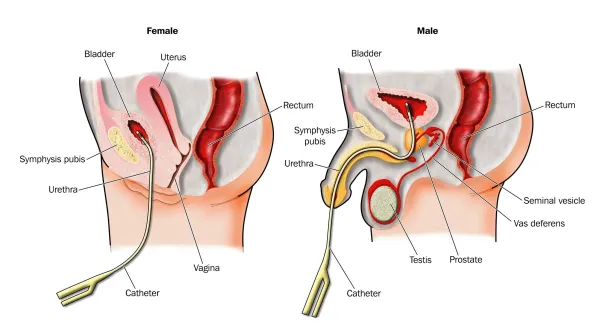Spring Into Correct Coding With These 5 Brain-Teasers

Can you answer these coding questions about E/M, Pap smear, post-procedural complications ICD-10, and more? Test your coding accuracy with these scenarios from multiple specialties. Is Your Service Worth An E/M Code? Question: The provider did not perform a physical exam after an E/M encounter for a follow-up patient but did obtain a complete history and vitals. In addition, she prepared a detailed treatment plan for the patient. Can we report this as E/M service? Answer: If you look at the descriptors for “new” patient E/M codes and “established” patient E/M codes, you will notice that established patient E/M codes 99212-99215 (Office or other outpatient visit for the evaluation and management of an established patient, which requires at least 2 of these 3 key components ...) need only two of the three components of history, examination and medical decision-making. However, the codes for new patient evaluations, i.e., 99201-99205 (Office or other outpatient visit for the evaluation and management of a new patient, which requires these 3 key components ...) need all three elements to be performed by a clinician. Since the patient’s history was documented and a treatment plan was drawn up—and because the patient is an established patient—you won’t need the physical examination to report an E/M code for the visit. However, in this case it does state the provider recorded the vitals. Therefore, the exam would qualify as a problem focused examination and allow for the third element to support a new patient visit. Since the examination was recorded, you would report a 99201 since all three components must meet or exceed the level of service billed. Any new patient code above a 99201 would require a higher level examination be performed and documented. ICD-10 Coding for Vocal Tic Question: A six-year-old male patient comes to the office and his mother says he makes a grunting sound every few minutes. She asks the physician to determine whether the boy has Tourette’s disorder, but the physician doesn’t find anything wrong with the child other than the vocal tic. Answer: If the physician diagnoses the child with a chronic vocal tic disorder, the appropriate code is F95.1 (Chronic motor or vocal tic disorder). Some coders may overlook this code if the patient doesn’t have a motor tic, but keep in mind the use of the word “or” in the descriptor, meaning you can use it for either a vocal tic or a motor tic. You should avoid reporting the Tourette’s disorder diagnosis (F95.2) because the pediatrician did not diagnose the patient with the disorder. If the doctor determines that the patient’s vocal tic is from a different tic disorder that isn’t listed in the ICD-10 manual, report F95.8 (Other tic disorders). Refresh Your ENT Post-Op Complication Codes for ENT Question: A patient presents with complaints of bleeding from the post op site following a tonsillectomy. Do you report the tonsillitis diagnosis here or would some other aftercare code would be more appropriate? Answer: Tonsillitis (J03.-) would not be an option here because that is not the reason for the current visit. This is more of a case of post-procedural bleeding, and you must code it as such. Since tonsillitis is coded within the respiratory system, the correct code choice is J95.830 (Postprocedural hemorrhage of a respiratory system organ or structure following a respiratory system procedure). Note: This code was revised in October 2016 to remove the word “hematoma” from the descriptor. A separate new code, J95.860 (Postprocedural hematoma of a respiratory system organ or structure following a respiratory system procedure), was created to distinguish a post-procedural hemorrhage from a hematoma. Meet the Sixth Character Mandate for Pap Smears Question: If the patient comes back in for a Pap smear due to abnormal results, what ICD-10 code(s) should you use and why? Answer: You should report R87.61- (Abnormal cytological findings in specimens from cervix uteri…) if the ob-gyn repeats the Pap smear due to abnormal results. This code requires a sixth character, points out Peggy Stilley, CPC, CPC-I, CPMA, CPB, COGBC, revenue integrity auditor in Norman, Oklahoma. If you don’t include the sixth character, this “could be a reason for a denial,” she adds. For example, a 35-year-old woman with multiple sexual partners presents for an annual exam. She has not had a Pap smear in four years. The Pap results return ASC-US, and the physician asks her to come back in three months for a repeat Pap to follow any abnormal cell progress. When the patient returns, you should code the appropriate E/M office visit with R87.610 (Atypical squamous cells of undetermined significance on cytologic smear of cervix [ASC-US]) If the Pap result was ASC-H, you would report R87.611 (Atypical squamous cells cannot exclude high grade squamous intraepithelial lesion on cytologic smear of cervix…). If the sample of cytologic smear was inadequate, you may report R87.615 (Unsatisfactory cytologic smear of cervix). Eyes on Conjunctivitis Coding Question: The ICD-10 code H10.10 was reported for a conjunctivitis case but was denied. What new offerings might be a better choice under the ICD-10 updates? Answer: Under ICD-10, you not only have to denote the specific type of conjunctivitis by using the accurate diagnosis code, but you also have to indicate which eye was affected. The following is a sampling of ICD-10 codes that you should study to ensure you’re reporting your ICD-10 codes properly: The “-” designations above show where you should input an additional character to denote the affected eye. As shown in the H10.10-H10.13 range above, you have options for the left eye, right eye, bilateral, or unspecified in most categories under ICD-10. Your physicians should always include the affected eye in their documentation. All you need to do as a coder to capture this already present information is to format your superbill to capture the additional anatomical information. Note that the “-” characters in the H10.3- and H10.40- examples above don’t translate exactly from one conjunctivitis condition to the other. For H10.3-, a “0” for the final character refers to an unspecified eye, whereas for H10.40-, a “9” for the final character refers to an unspecified eye.




